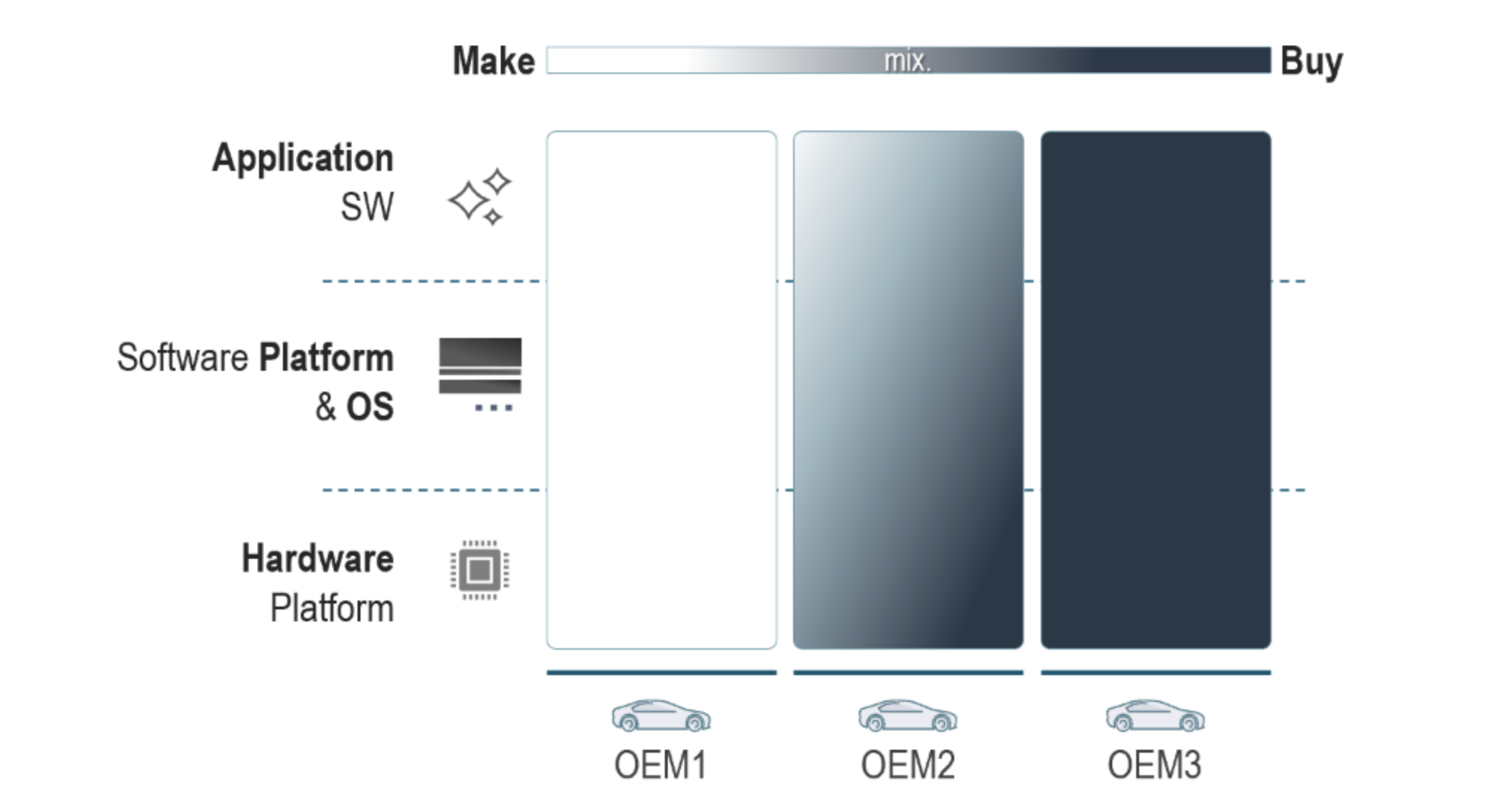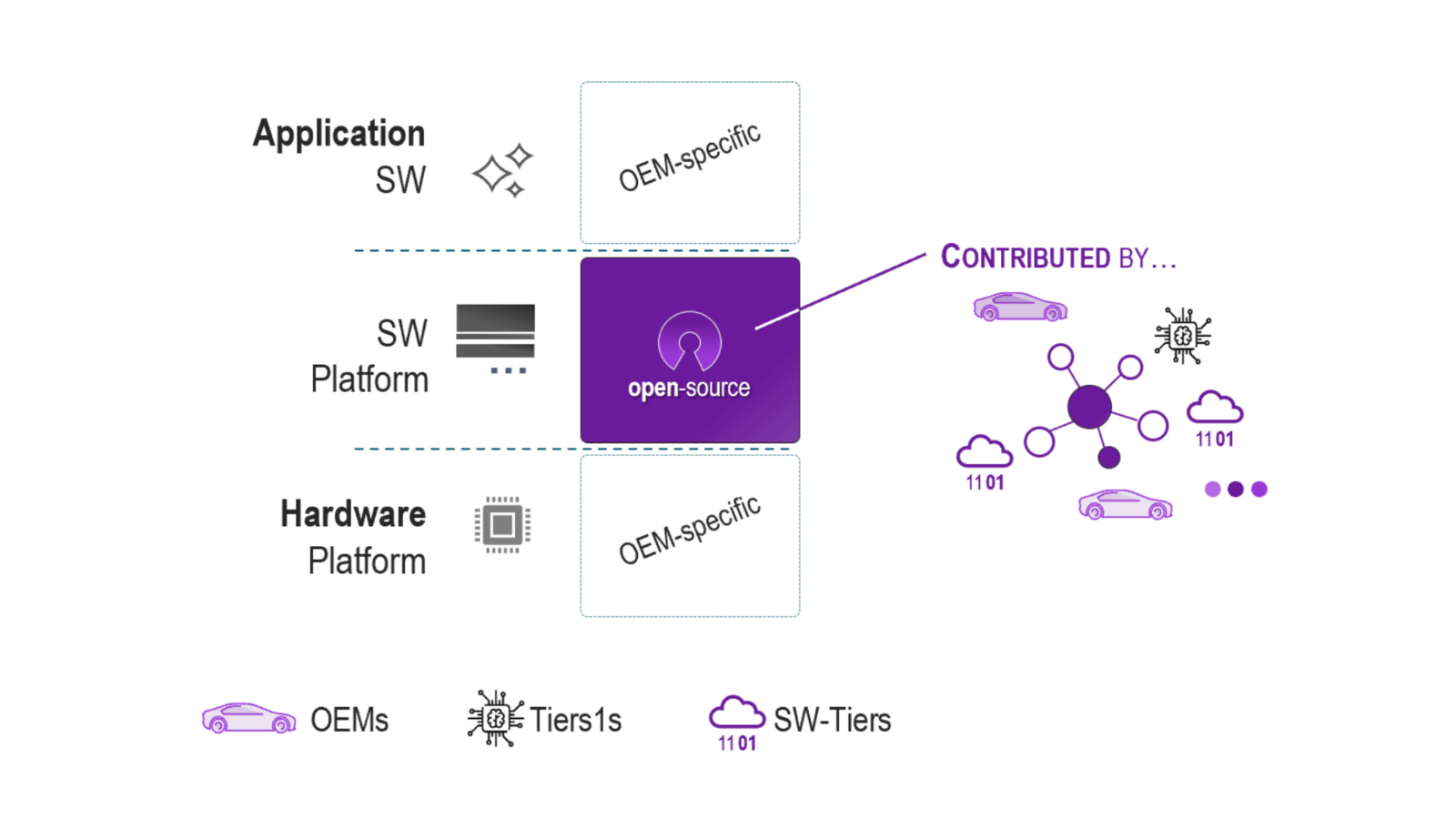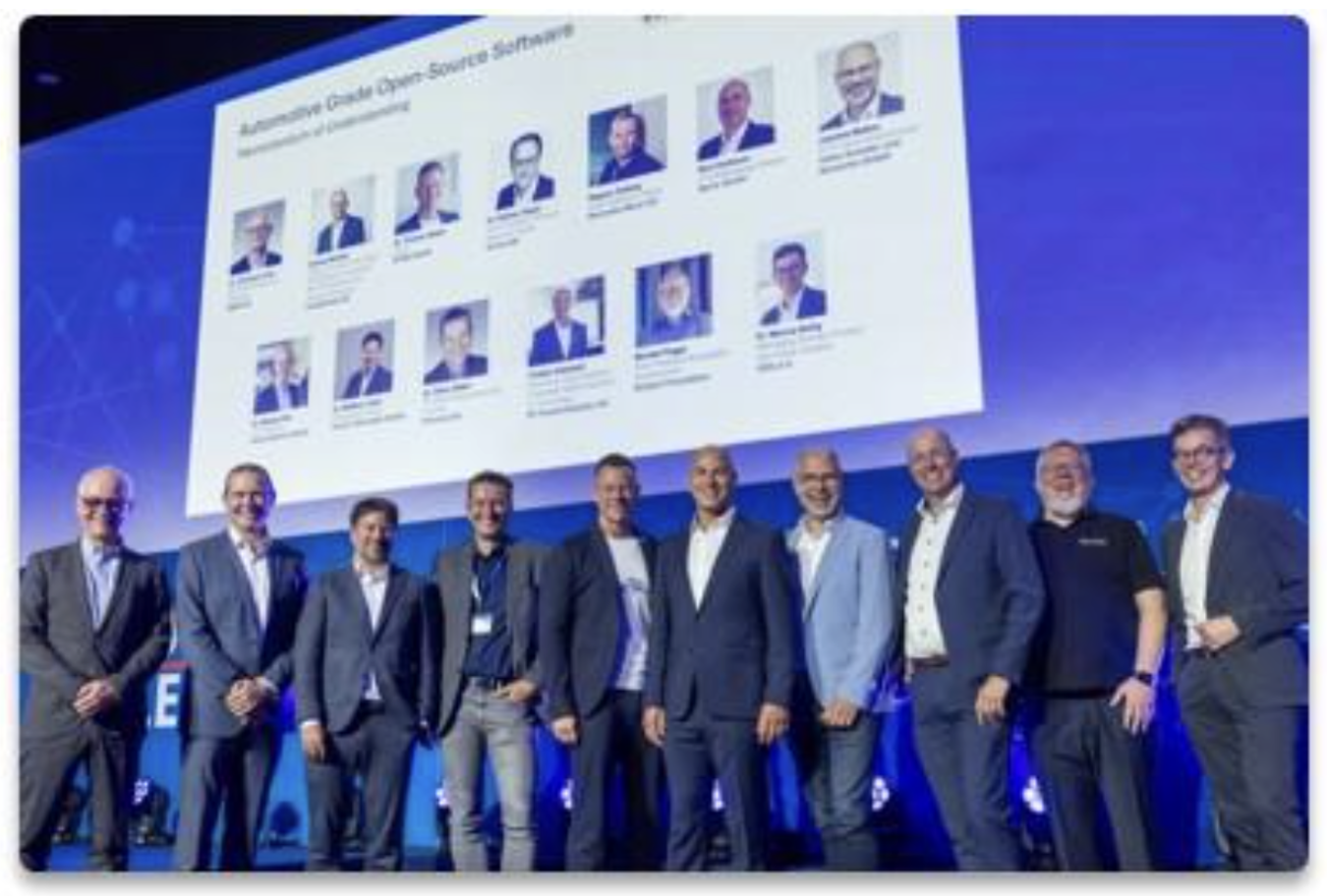Rethinking automotive software platforms
Almost every function in modern vehicles is controlled by ECUs (Electronic Control Units). To reduce effort and speed up development and maintenance, the industry has long relied on software platforms, shared sets of components and services that power these ECUs.
Using automotive standards where possible offers extra benefits: “off-the-shelf” solutions that integrate faster and more reliably.
However, there is still no widely adopted standard for more complex platforms in safety-critical domains. For example, those using service-oriented communication for Advanced Driver Assistance Systems (ADAS). Traditionally, each OEM has addressed this gap in one of three ways:
- The proprietary mix: Combining in-house software with components from multiple suppliers. This allows customisation but adds integration complexity, quality assurance challenges, and slows development.
- The single supplier approach (buy): hiring one Tier-1 to deliver the complete platform. This reduces integration work but creates dependence on one supplier and limits quality control in combined systems.
- In-house approach (make): developing a software stack entirely in-house. This increases the effort by far yet offers better control of the quality.
All three strategies have trade-offs. New, tech-focused OEMs tend to build more in-house, while traditional OEMs often outsource more. But there is also a completely new option, one that blends the benefits of both and opens new opportunities for everyone involved.

A shared, open source platform
Instead of duplicating similar work across companies, the automotive industry could develop a shared open source platform that is free to use, shaped by a broad community, and available to all.
That’s exactly what Eclipse S-CORE (Safe Open Vehicle Core) aims to provide: a safety-compliant, service-oriented software platform for high-performance ECUs, developed collaboratively under the Eclipse Foundation and Eclipse Software Defined Vehicle Working Group.

Seven principles that define S-CORE
- Everyone is welcome: OEMs, Tier-1s, software vendors, universities, and authorities worldwide are free to join and contribute.
- Everybody contributes: The goal is to jointly develop a service-oriented platform for safety-critical automotive systems.
- We reuse: We integrate proven solutions where possible, avoiding re-implementation of existing functionality.
- We don’t just specify, we code: We focus on building the platform directly in code, rather than lengthy top-level specifications.
- One best solution: When multiple implementations exist, the community agrees on the best one to maintain.
- We are open source in every way: Not only the software, but also the organisation, processes, and toolchain are open.
- We meet industry standards: Safety and compliance (e.g. ISO 26262 for functional safety) are part of the development from the start.
By following these principles, Eclipse S-CORE combines openness with the rigour needed for real-world automotive applications.
Why this matters for the industry
A software platform is a means to an end: delivering great customer features on top of strong, reliable hardware. Developing a proprietary platform for every OEM wastes effort and delays innovation.
With S-CORE, the industry can:
- Reduce duplication: Build the non-differentiating base together once.
- Improve quality: Contributions are transparent and peer-reviewed by diverse experts.
- Increase speed: Direct, code-first development accelerates delivery.
-
Enable collaboration: Suppliers and OEMs work on a common foundation, then differentiate above it.

How Eclipse S-CORE Works
The S-CORE project follows the well-established Eclipse Development Process (EDP), that regulates the life cycle of open source projects under the Eclipse Foundation governance. Key roles include:
- Project lead sync: Coordinates direction and decisions.
- Feature teams: Focus on developing specific modules.
- Cross-Functional Communities: Address architecture, processes, infrastructure, and testing.
Two key contributor roles are defined:
- Committers: Maintain and integrate code.
- Contributors: Provide features, fixes, and documentation.
To ensure safety compliance, an additional role – Safety, Security, and Quality Manager – oversees alignment with standards. Unusually for open source,S-CORE processes are subject to external safety audits, making it easier for OEMs to certify systems built on the platform.
The toolchain is entirely open source, lowering the entry barrier for newcomers.
Business benefits for all players
Since the platform itself is non-differentiating, it’s the perfect area for collaboration:
- OEMs can reduce integration effort and share maintenance costs.
- Tier-1s can deliver projects faster and with higher consistency.
- Application and SoC (System on Chip) suppliers gain a stable, broad customer base through standardised interfaces.
- Service and tool providers can support all users of the platform with compatible offerings.
For companies whose core business has been delivering platforms, the model shifts to becoming an Eclipse
S-CORE distributor, adapting the generic platform for production vehicles (e.g. tailoring it to specific hardware, operating systems, and network environments), adding optional proprietary modules, and ensuring safety certification.
From a small start to growing momentum
Eclipse S-CORE began in 2024 with five initial members: Accenture, BMW, ETAS, Mercedes-Benz, and Qorix.
Since then, both active participation and global interest have grown significantly. A major milestone came in June 2025, when the Memorandum of Understanding (MoU) was signed by leading European automotive players to support open-source products, with S-CORE as a flagship example.
The vision is to grow into a truly global community of like-minded partners across all markets and interest groups.

Get involved
Eclipse S-CORE is open to all. Whether you’re an engineer, researcher, supplier, or strategist, your contribution matters.
Visit:
- Code repository: https://github.com/eclipse-score
- Project page: https://eclipse.dev/score/
Join the movement! Help shape the shared foundation for the future of automotive software.




